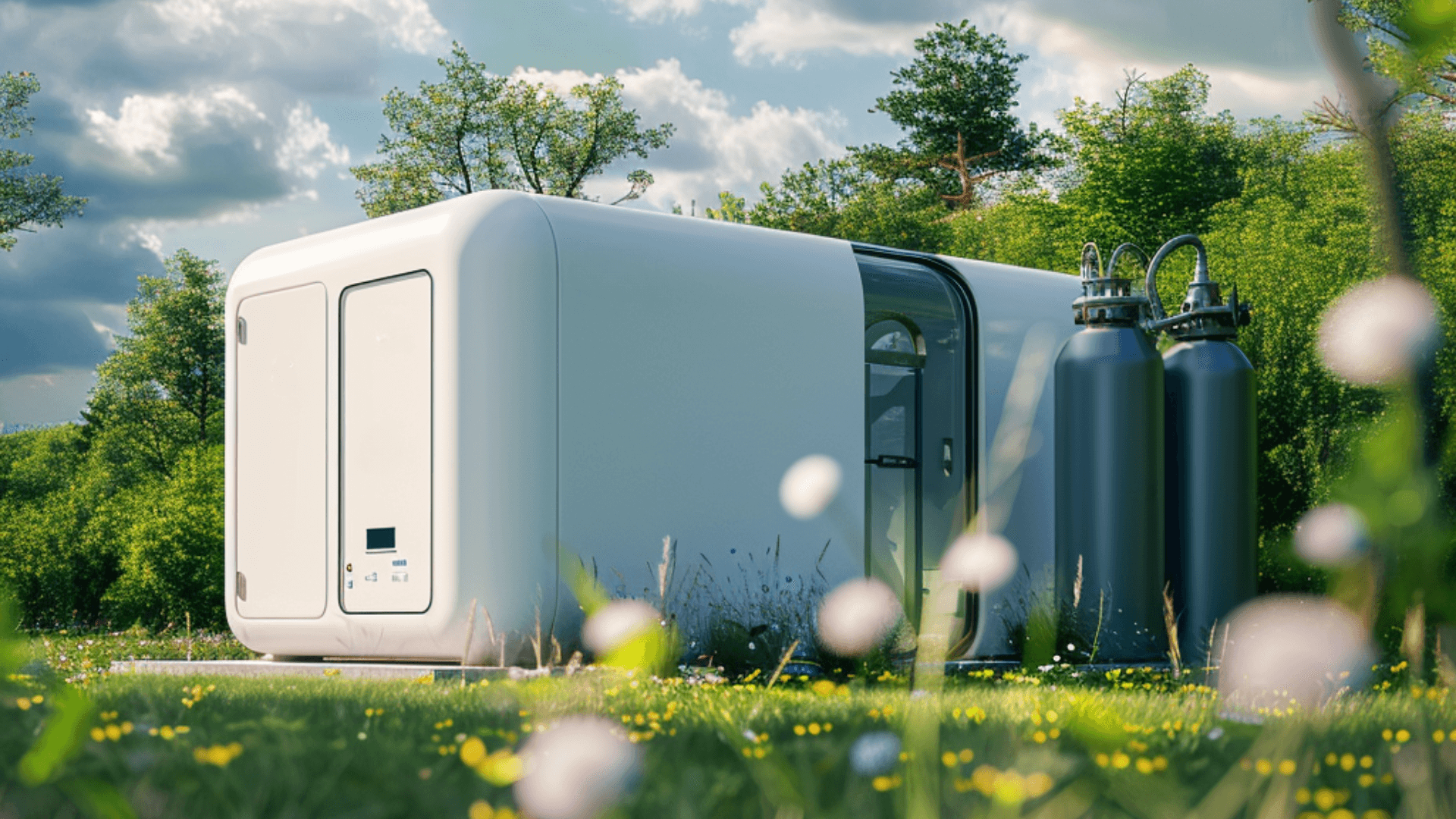The future of energy - hydrogen will revolutionize the biofuel industry?
The biofuels sector is expected to grow strongly in the coming years, although, as a December report by the European Court of Auditors indicates, the process is progressing more slowly than anticipated due to the lack of a long-term strategy and high costs. At the same time, hydrogen, which can play a key role in the energy transition, is considered an important element of EU energy policy.

The biofuels sector is expected to grow strongly in the coming years, although, as a December report by the European Court of Auditors indicates, the process is progressing more slowly than anticipated due to the lack of a long-term strategy and high costs. At the same time, hydrogen, which can play a key role in the energy transition, is considered an important element of EU energy policy.
Why Hydrogen?
The use of hydrogen as a biofuel opens up new prospects for sustainable development and the fight against climate change, offering a clean and efficient alternative to traditional energy sources. A key advantage of hydrogen is that its combustion in engines or use in fuel cells to generate electricity generates no harmful emissions - the only byproduct is water. In addition, hydrogen stands out for its widespread availability and high calorific value, making it a potential fuel of the future. The calorific value of hydrogen is 33.3 [kWh/kg], which is significantly higher than the calorific values of gasoline (12.0 [kWh/kg]) or natural gas (10.6-13.1 [kWh/kg]).
Understanding the different "colors" of hydrogen is crucial to assessing its environmental impact and energy potential. Green hydrogen, produced from renewable energy by electrolysis of water, is the most desirable. It is considered environmentally friendly because its production is emission-free. Other types of hydrogen, such as black and brown hydrogen derived from coal and lignite, and gray hydrogen - obtained from natural gas by methane reforming or coal gasification - have a much worse greenhouse gas emissions record. Depending on the technologies used, turquoise, pink, yellow and blue hydrogen are still distinguished.
What stands in the way?
The biggest challenges of using hydrogen as a biofuel concern its transportation and storage. These problems stem from the element's low density, making it difficult to store and transport. It can penetrate most materials, which means that tanks filled with it can gradually lose their contents, even when not in direct use.
In addition, hydrogen's high flammability when in contact with air poses a serious safety risk. Hydrogen ignites over a very wide range of concentrations (from 4 percent to 75 percent in air). It burns with an invisible flame, which can make it difficult to detect a fire and control it effectively. The low ignition energy means that leakage from a leaking tank can lead to an uncontrolled explosion, which poses a serious risk both in the production process and when using hydrogen as a fuel. This calls for the development not only of low-cost and efficient methods for producing hydrogen, but also of advanced safety systems for its storage and distribution, in order to fully realize its potential as a clean energy source.
Polish Hydrogen Strategy
"Polish Hydrogen Strategy to 2030 with an Outlook to 2040" is a document that sets goals for the development of the hydrogen economy in Poland, pointing to:
- implementation of hydrogen technologies in the power and heating sectors;
- use of hydrogen as analternative fuel in transportation;support for decarbonization of industry;
- production of hydrogen in new installations;
- efficient and safe transmission, distribution and storage of hydrogen;
- creation of a stable regulatory environment.
The strategy steers Poland toward a low-carbon economy, emphasizing the role of hydrogen in the energy transition.
Moving toward the implementation of hydrogen technologies in Poland is a step toward reducing greenhouse gas emissions. At PAD RES, it is important for us to implement projects that contribute to our country's energy transition. Our commitment to the development of renewable energy sources underscores our determination to build a future where clean energy and innovative technologies play a key role.
Sources:
https://www.kierunekenergetyka.pl/artykul,102208,alternatywy-dla-paliw-kopalnych-najbardziej-perspektywiczny-jest-wodor-a-rozwoj-biopaliw-przebiega-wolniej-od-oczekiwan.html
https://www.umcs.pl/pl/komentarze-eksperckie,22097,czy-wodor-to-paliwo-przyszlosci-komentarz-eksperta,124362.chtm
https://www.rynekinfrastruktury.pl/wiadomosci/drogi-i-autostrady/wodor-jako-paliwo-przyszlosci--czy-da-sie-nim-zastapic-rope-naftowa-84295.html
Read more
Knowledge about RES
Cyber security in RES - how to secure infrastructure against growing threats?
The development of renewable energy sources has become an important element of the energy transition both in Poland and worldwide. This has given rise to the need to manage energy production and distribution more efficiently. The integration of modern digital technologies, such as SCADA (Supervisory Control And Data Acquisition) and IoT (Interenet of Things), into the RES energy infrastructure enables more efficient operations in these areas. However, this advanced technology brings with it new cyber security challenges that can disrupt entire energy networks.
Read the article
CSR
Christmas Gifts from PAD RES: Support for the Children's Home and the Youth Fire Brigade
In this special atmosphere of the holidays, we are delighted to share with you the heartfelt initiatives we have taken as PAD RES. Our CEO, Mariusz Adamczewski, and the entire team of employees decided to make this Christmas unforgettable for the Children's Home in Nowa Grobla and the Youth Fire Team in Korzenica. For us, this action is not only an expression of charity, but also a real participation in Corporate Social Responsibility
Read the article
News
Booming green energy: PAD RES Crosses the 1,000-watcher threshold on LinkedIn
We are extremely pleased to announce that our community on LinkedIn has surpassed the magic number of 1,000 observers! We are delighted to have achieved this result exclusively organically. It is a special moment for us, a moment of reflection on where we have come in our mission to lead in energy transformation.
Read the article
PAD RES DEVELOPMENT Ltd.
NIP: 5272967552
Al. Jana Pawła II 19, 10th floor
00-854, Warsaw
Agnieszka Dopierała, Communication Expert



